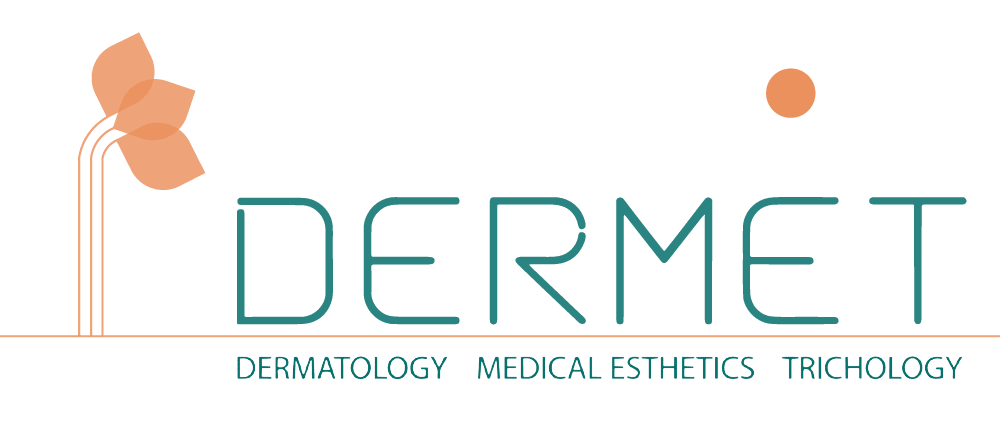Laser for Acne Scars
What are acne scars?
Acne scars are permanent textural or pigment changes that occur on the skin after inflammatory acne lesions heal. When acne penetrates deep into the skin, it damages tissue and the body’s repair process doesn’t always restore smooth skin. This results in scars.
Which are the different types of acne scars ?
Not all acne scars are the same and that’s why treatment needs to be customized. Acne scars are mainly categorized based on how the skin heals after an acne lesion resolves. Some scars form due to loss of tissue, while others form due to excess collagen.

Atrophic Scars (Depressed scars )
These are the most common type of scars, especially on the face. They are formed when there is loss of tissue during the healing process.
a) Ice Pick Scars
- Deep, narrow, V-shaped
- Look like tiny holes or enlarged pores
- Often extend into the dermis
b) Boxcar Scars
- Broad depressions with well-defined edges
- U-shaped with sharp margins
- More superficial than ice pick scars
c) Rolling Scars
- Wide, shallow depressions with sloping edges
- Give skin a “wave-like” texture
- Caused by tethering of skin to deeper structures
Hypertrophic Scars & Keloid Scars
These scars form due to excess collagen production during healing.
a) Hypertrophic Scars
Raised, thick scars that stay within the boundary of the original acne lesion
b) Keloid Scars
Raised scars that extend beyond the original lesion
What are the available treatments for acne scars at Dermet Clinic?
Indian skin is prone to pigmentation (PIH), so safety is just as important as effectiveness.
The treatments available at DERMET clinic
1. Microneedling Radiofrequency (MNRF)
Safe for all skin types
Minimal downtime
Excellent for rolling and mixed scars
- Delivers radiofrequency energy through insulated microneedles
- Triggers collagen remodelling deep in the dermis
- Little surface damage = low risk of pigmentation
2. Er: YAG Laser
- It targets water in the skin, vaporizing superficial tissue with very minimal thermal damage.
- This makes healing faster and safer compared to CO₂ lasers, especially in darker skin types.
- Stimulates collagen remodelling as skin heals, improving smoothness and reducing scar depth.
3. Dermal Fillers
Dermal fillers offer a quick, effective solution to instantly lift depressed acne scars, especially rolling and some boxcar scars. Unlike lasers that stimulate collagen over time, fillers provide immediate results by physically raising the scar to match the surrounding skin level.
- Dermal fillers are gel-like substances injected under the skin.
- They lift indented scars by restoring lost volume beneath the scar.
- Some fillers also stimulate new collagen production over time.
4. Subcision
Subcision is a minor in-clinic procedure used to treat depressed acne scars, especially rolling scars. It works by releasing the fibrous bands that pull the scar downward and cause indentations. Once these bands are released, the skin begins to lift and heal more evenly.
5. Platelet Rich Fibrin
Platelet-Rich Fibrin (PRF) is a second-generation platelet concentrate that contains platelets, white blood cells, fibrin matrix, and growth factors — all derived from the patient’s own blood.
When injected into acne scars or hollow areas, PRF acts like a natural, regenerative filler, stimulating collagen, improving skin tone, and gradually lifting depressed scars.
Why a single modality of treatment is not that effective ?
Acne scars are complex. We often combine lasers with other treatments like,
Subcision, Fillers or PRF, Collagen-boosting therapies to achieve more natural and layered improvements, rather than relying on any single modality.
Why Choose Us?
At Dermet Clinic we ensure that you’re comfortable and informed every step of the way — from consultation to post-treatment recovery.
Book Appointment
Frequently Asked Questions
How Does Laser Treatment for Acne Scars Work?
Laser treatment uses focused light energy to target damaged skin cells, promoting collagen production and helping to smooth out scar tissue. The laser either works by resurfacing the skin (ablative lasers) or stimulating deeper layers without damaging the surface (non-ablative lasers).
Is Laser Treatment Painful?
Most people report mild discomfort during the procedure, which is often described as a warm or tingling sensation. Numbing creams are typically applied before treatment to minimize discomfort. For more aggressive treatments, local anesthesia may be used.
How Many Sessions Will I Need?
The number of sessions needed depends on the severity of your acne scars. Typically, you may require 3-6 sessions, spaced about 4-6 weeks apart, for optimal results. Your dermatologist will assess your skin and create a personalized treatment plan.
Can Laser Treatment Completely Remove Acne Scars?
While laser treatment can significantly reduce the appearance of acne scars, complete removal isn’t always possible, especially with deep or severe scarring. However, many people see dramatic improvements with reduced visibility of scars.
Who Is a Good Candidate for Laser Acne Scar Treatment?
Laser treatments are suitable for most skin types and can be effective for a variety of acne scars, including rolling, boxcar, and icepick scars. However, individuals with active acne may need to treat their acne before undergoing laser scar treatment.
